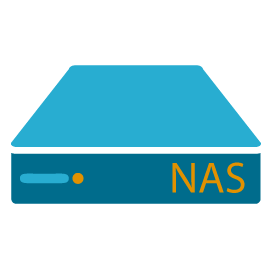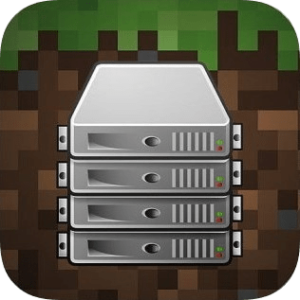Disclosure: Privacy Australia is community-supported. We may earn a commission when you buy a VPN through one of our links. Learn more.
Home Server Uses

The computer that was used to land humans on the moon was significantly less powerful than your average smart watch. Those were the days when relatively simple computers took up literal buildings, and could barely do more than complex mathematics.
Nowadays though, technology has advanced so far that we can fit building sized computers into a slim smartphone and make it about 1,000 x more powerful to boot.
With technology being so much smaller and cheaper, it’s natural to want to start taking it into your own hands, and there’s nothing better than setting up your own home server. The best part is that you can utilize an old desktop or even laptop to set up a relatively simple server that can add a ton of utility to your day to day life.
What To Use Your Home Server For?
File Server
Probably one of the most common uses of a home server is to use them as a file server. This can help with the distribution of files that aren’t necessarily easy to come by, such as personal work files, or just stuff you’ve written down, or even if you’re working on a game project or other collaborative work.
Usually, this works by storing the files on the server and then accessing it through a File Transfer Protocol (FTP) or FTPS program (The S just stands for secure).
Of course, this also works internally for your own home, so if you want to share files or images between computers and family members, this makes it much easier than needing to load things up onto a USB or external hard drive.
Storage/Backup

Another popular usage for home servers is for storage and backup. You never know when you might get a critical failure on your main device and lose information, so having backups is important.
The usual rule here is the 3, 2, 1 rule; 3 copies of your data, 2 of which should be on different devices and one of which should be in cloud storage.
As part of this philosophy, one copy of the data can be held on a home server on something called a NAS or Network Attached Storage. You can also synchronise your data with this back server so that you don’t have to be constantly copying files over.
Of course, taking all this one step further, you can combine its use as storage/backup with a file server, and have it as a sort of central repository for any files you might share between devices.
For example, maybe you want to share books, films, music, or even games, and having a central server where you can store all that not only frees up space on your devices, it also makes it easier to move stuff around.
Media & Streaming Server
Speaking of films and music, one thing you can do with your server is set up a media & streaming library, sort of similar to Netflix.
While this one is slightly more complicated to get done in terms of hardware, as it depends on the number of people using it simultaneously, it’s still pretty fun.
Programs that you’d likely use are either Plex or Kodi, each with a different approach to how things should be streamed, with Plex being more of a library manager and streaming app and Kodi being a bit more standalone and straightforward.
Or if you prefer going with Kodi, throw a good Kodi VPN with it and you have yourself a pretty powerful and secure streaming service to call your own.
You can also use this to stream content inside your home as well so you don’t have to eat up bandwidth or physical space by having another connected device. Most of the time you can probably get away with a TV and just a connection to your server and you’re good!
Download Server

If you’re an internet user, you’ve probably come upon the term ‘BitTorrent’ or just ‘torrenting’.
Well, these are ways for people to share data with each other, be it movies or films or what have you.
Of course, oftentimes these can be illegally gained content, but there are legitimate cases for its use as well.
Either way, having a download server or ‘seedbox’ can be something useful for keeping the downloads available for people to have access to 24/7. Often times this means building a PC or device that is relatively low spec and low power usage, such as a NAS since you don’t want to take a massive hit to your wallet.
Another thing you’ll have to consider is what is a good internet speed and if you have any kind of quota cap that can be affected by this.
Communications Server
This one is a little bit out there, but if you don’t trust secure messaging services, you could always set up your own little communications server using something like Jabber. Since you have essentially full control of it, you don’t have to worry about any provider logging metadata or things of that nature.
Similarly, it’s open-source so we know that the encryption is top notch. The framework works on pretty much any device as well, so it’s widely supported.
Similarly, if you don’t trust secure email services, you can set up your own email server. This gives you complete control to the emails, encryption techniques, and data that comes and goes.
If you’re especially paranoid, you can build a kill switch to delete everything if you feel threatened.
Interestingly, most companies tend to have their own email servers, so you’ve probably run into this tech all the time.
Related Read: What is a Proxy Server?
Gaming Server

One of the funnier options in this list, running your own game server can be pretty great. For example, you don’t have to worry about the server administrator changing the game rules, or that the device goes down for maintenance in the middle of the match.
Similarly, you get to decide what update is applied and when you’ll be updating the game version.
There’s surprisingly a ton of games that let you run your own server like Minecraft, Team Fortress and Counter-Strike: Global Offensive. Just make sure that whatever device you use for a gaming server has the required specs to run the server of the game you’ve chosen.
Web Server
With all the internet bombarding us with ads for domains and hosting services, a lot of people tend to forget that they can actually host their own server at home.
While this may be relatively more complicated than just spending the $5-$10 for somebody else to handle your web hosting, if your website is going to be relatively simple and won’t see a lot of traffic, it’s still a viable option.
For certain it’s a great use for an old desktop that you aren’t really utilizing and is just sitting somewhere gathering dust. Of course, there is also the investment of time to learn the software to use it, but if you’re already relatively tech-savvy, it can be a fun little project.
Nostr Relay
What is Nostr? Nostr is a straightforward and inclusive protocol that facilitates a globally accessible, decentralized, and censorship-resistant social media platform.
Relays are like the backend servers for Nostr. They allow Nostr clients to send them messages, and they may (or may not) store those messages and broadcast those messages to all other connected clients.
Relays serve as the backend servers for Nostr, enabling communication between Nostr clients by receiving and potentially storing messages, which are then broadcasted to other connected clients. The number of relays a client is connected to directly impacts the amount of information they can access. By operating your own relay, you can ensure that your information remains intact, resembling the concept of hosting a personal Facebook or LinkedIn account.
Tips to Setup A Home Server

While we won’t go into a full guide on how to exactly set up your server, there are a few tips we can provide you with
Home Server Uses Tip #1
First and foremost consider what your networking infrastructure looks like, both inside and outside your home.
For inside make sure that your house is wired with ethernet cable or a WiFi network so that you can access your home server from pretty much anywhere in the house. For outside consider what kind of internet service you are getting in terms of speed and quota.
Certain servers require quite a lot of bandwidth and need to transfer terabytes of files per month, so if your current internet plan doesn’t support that, you’ll probably need an upgrade.
Home Server Uses Tip #2
One of the best ways to start out with a home server is to use an old PC that is otherwise sitting doing nothing. While it’s true you can spend thousands of dollars on a home server, in fact, some large-size HDDs can cost a thousand or two on their own, you can actually set up a server with nothing more than a Rasberry PI.
So don’t over-think the specs too much on your first server, just make sure you have the minimum to get started for the type of server you want.
Home Server Uses Tip #3
Think long about where you want to place your server. Since it’s going to be running 24/7 and it likely won’t have the quietest fans, make sure it’s somewhere out of the way where it won’t be constantly bothering you. Similarly, make sure it’s not somewhere closed away without any cooler circulating air; you really risk overheating it if you aren’t careful.
Of course, the biggest thing is size, and depending on what kind of server you go for, it can take up quite a bit of space, so make sure you aren’t gonna be constantly bumping into it or having it accessible to anybody in the household.
Home Server Uses Tip #4
Before using your server for anything, make sure you get used to the OS you’re going to be using. This list includes things like FreeBSD, Gentoo, Fedora, and even Ubuntu. It’s important to at least familiarize yourself with these operating systems so you don’t pull your hair out in frustration, as well as just to get a sense of which OS will work best for you.
Home Server Uses Tip #5
If you plan to open yourself up to the internet at large through a web or game server, you should also get familiar with some open source privacy tools, which will help you protect both your data and your connection!
In Conclusion
As you can see, a home server can be super fun to play around with, and there are whole communities dedicated to both home network and home server usage. Not only can it be a fun project and a great way to repurpose an old device, but it can also actually be pretty useful for secure communication, game server hosting, data storage, and file distribution.
Just imagine, we went from barely being able to fit a few hundred megabytes on a building-sized computer, to be able to store thousands of gigabytes in a small hard drive and then accessing all that data from anywhere in the world.
It’s pretty cool.





